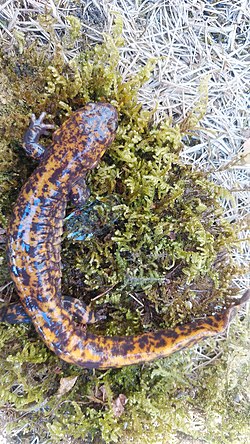| Hynobius ikioi | |
|---|---|
 | |
| Scientific classification | |
| Kingdom: | Animalia |
| Phylum: | Chordata |
| Class: | Amphibia |
| Order: | Urodela |
| Family: | Hynobiidae |
| Genus: | Hynobius |
| Species: | H. ikioi |
| Binomial name | |
| Hynobius ikioi Matsui, Nishikawa & Tominanga, 2017 | |
Hynobius ikioi is a species of salamander in the family Hynobiidae, endemic to Kyushu in Japan. [1]